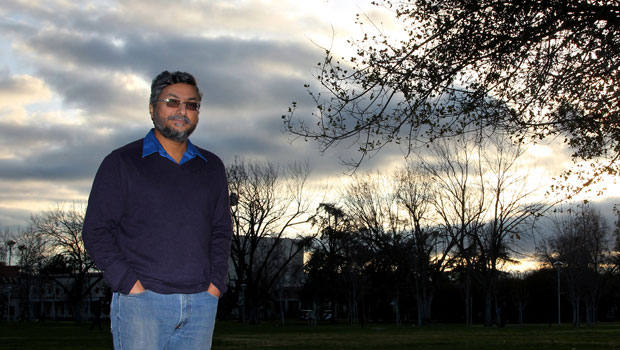Can thriving urban areas support biodiversity in plants and birds?
Surprisingly, yes, according to worldwide research findings of Fresno State Associate Professor Madhusudan Katti and an international team. The findings were published today in the biological research journal Proceedings of the Royal Society B.
Contrary to conventional wisdom that cities are a wasteland for biodiversity, the study found that while a few species — such as pigeons and annual meadow grass — are shared across cities, overall the mix of species in cities reflects the unique biotic heritage of their geographic location.
“Cities are often thought of as concrete jungles, not capable of supporting biodiversity,” Katti said. “In this study, we examined the birds in 54 cities and plants in 110 cities worldwide. We found that cities support surprisingly high numbers of plant and bird species.”
Despite declines in species, cities still retain endemic native species, providing opportunities for regional and global biodiversity conservation, restoration and education, according to the article. Conserving green spaces, restoring native plant species and adding biodiversity friendly habitats within urban landscapes could, in turn, support more bird and plant species.
“It is true that cities have already lost a substantial proportion of their region’s biodiversity,” Katti said. “This can be a cup half-full or half-empty scenario. If we act now and rethink the design of our urban landscapes, cities can play a major role in conserving the remaining native plant and animal species and help bring back more of them.”
Katti believes the research is the largest-scale assessment of the diversity of plants and birds in the world’s cities ever done. It is the result of collaboration between 24 scientists from 10 countries.
He was one of the co-principal investigators on a grant from the National Center for Ecological Analysis and Synthesis at UC Santa Barbara in 2011, funded by the National Science Foundation.
Proceedings is a biological research journal of The Royal Society, the oldest scientific academy in continuous existence bringing together many of the world’s most distinguished scientists from all areas of science, engineering and medicine. Its purpose is to “recognize, promote and support excellence in science and to encourage the development and use of science for the benefit of humanity.”
Katti, a faculty member at Fresno State since 2004, studies urban biodiversity and is a contributor to several chapters in the Cities and Biodiversity Outlook (CBO) scientific synthesis and a lead author of the CBO: Action and Policy.
Related links:
- Article citation: Aronson MFJ et al. 2014 A global analysis of the impacts of urbanization on bird and plant diversity reveals key anthropogenic drivers. Proc. R. Soc. B 20133330.





